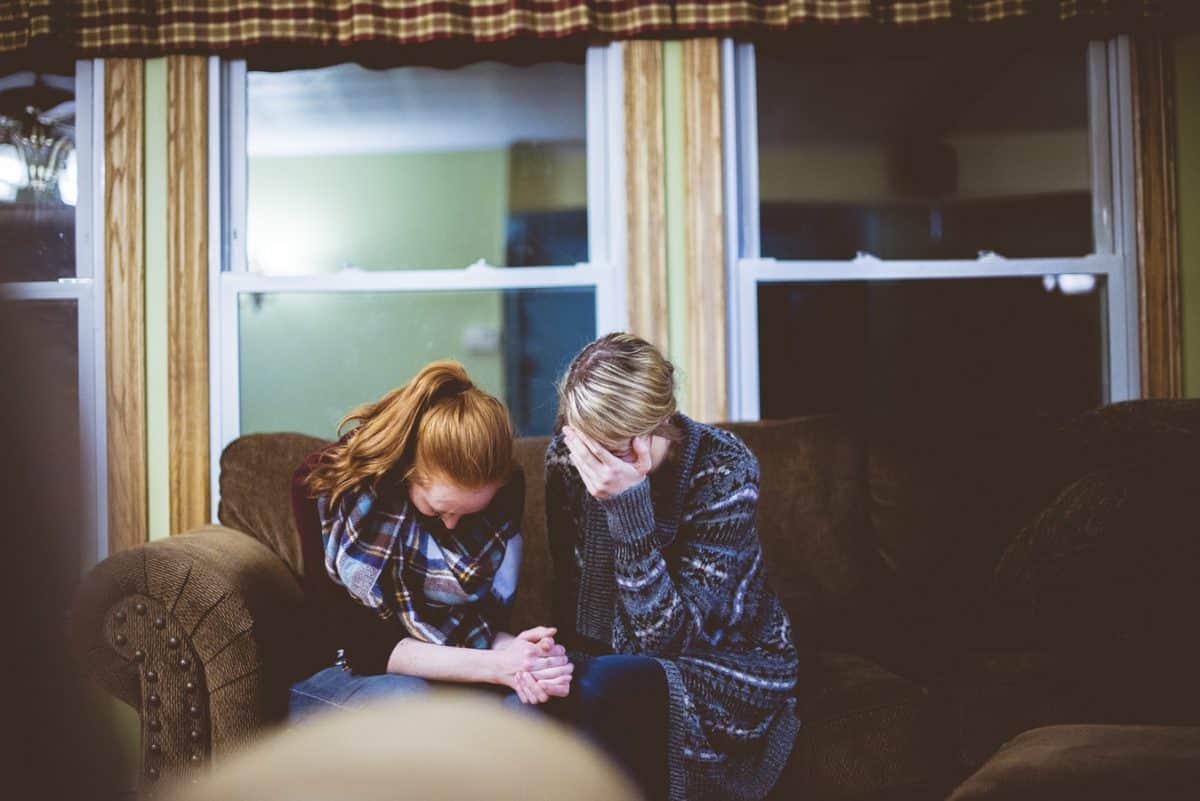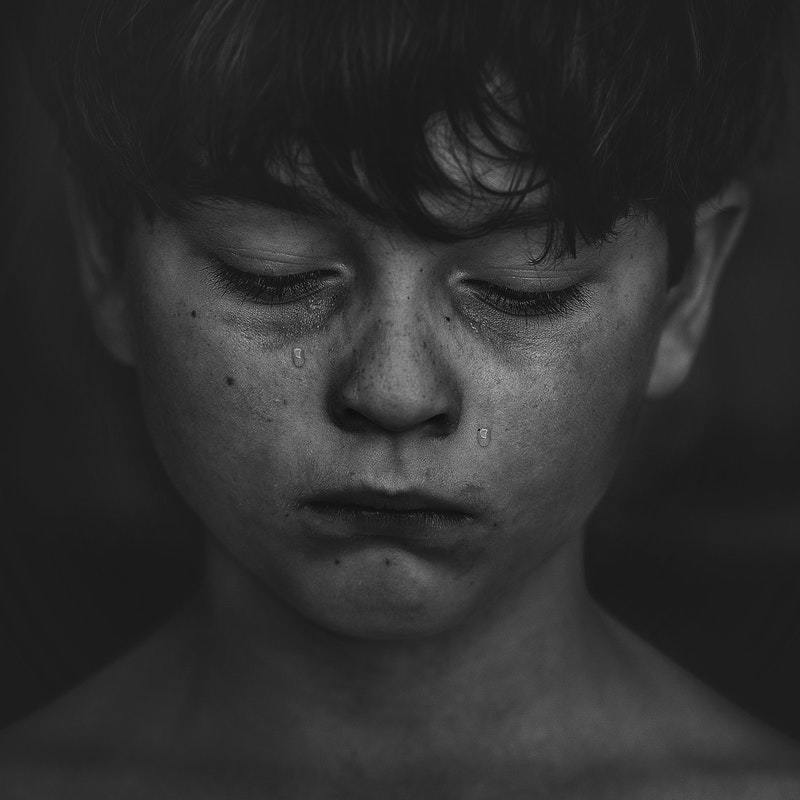Anxiety does not discriminate based on gender, wealth, or even age. Children are just as susceptible to anxiety as adults, with lots of possible factors to blame for its cause. Sometimes it is a genetic predisposition, sometimes something triggers it, and sometimes it pops up out of nowhere.
While the conversation has gotten better, society still isn’t great at talking about mental health, which isn’t good for us or our kids. As parents, we need to make sure our kids know what mental health is, and that they can and should talk to someone if they are experiencing anxiety.
Here are 5 Tips for Dealing with Anxiety in Children
Be There and Listen

It seems obvious and almost silly to say, but the most important thing you can do for a child experiencing anxiety, is to be there and listen to them. This is such an important thing to do. They need to know that there is someone they can talk to about how they are feeling and that they are being supported. Surprisingly, listening can sometimes take awhile because it is not always easy to put a finger on what is causing your anxiety. Sometimes it is hard to explain because what they are feeling cannot be expressed as easily as one specific thing. So just listen and be patient. This is the time for active listening and not just listening for five minutes and then telling them all the reasons they should not be worried. Be there, listen, and let them get it all out, whatever the “it” happens to be.
When you are dealing with anxiety in children, it is hard sometimes to bite your tongue and not tell them all the reasons that their worries are unnecessary, but it is something you need to do at this point. Their feelings need to be validated before you can unpack them and deal with them. Interrupting to say their fear that everyone in their class hates them isn’t true doesn’t make that worry go away. It will only shut them down from sharing their worries with you.
Reassure Them

After you have listened to the things they can identify as causing their anxiety, it is time to reassure them that everything is going to be okay. The problem with anxiety is that it takes over your brain. You can’t just shut it off and, unfortunately, it doesn’t magically disappear. So reassuring them isn’t going to make their anxiety go away, but it is still important to say that things will be alright. At this point, your goal is to calm them down.
One effective way to calm down an anxious child is to try some breathing exercises. A nice, simple technique is to have the child sit down somewhere comfortable and close their eyes. Have them take a deep breath in through the nose and exhale through the mouth. Do this a number of times until their breathing seems steady and they are calm. Another technique is back-to-back breathing. Sitting nice and tall, sit back to back with your child and both close your eyes. Together, take a deep breath in through the nose and hold it for three seconds (it helps if you count this out loud the first few times to help your child find a good rhythm). Then exhale together through the mouth. The point of this technique is that your child can literally feel the support of your back, and you can feel each other’s backs rising and falling each time you breathe. Again, repeat this until your child is breathing steadily and seems calm.
Explain Anxiety in a Way They Can Understand
Children (and sometimes adults for that matter) do not generally have a firm grip on mental health issues or on what something like anxiety actually is. So another part of helping calm down and reassure a child dealing with anxiety is to explain what is going on in a way that they can easily understand. One way to explain anxiety to a child is to say that all those worries they feel are false alarms going off in their brain.
For example: it is like you are walking and see a stick out of the corner of your eye that your brain thinks is a snake. You stop and maybe even jump back, until you look at it again and realize it is just a stick. Your brain was trying to protect you from what could have been a snake. With anxiety, your brain is sending you all these signals to worry or be careful about things, but in these situations, your brain just does not recognize them as false alarms.
Another important thing to explain when dealing with anxiety in children is that some level of anxiety is normal. Everyone feels anxious about something some of the time. You can even give an example of something you have recently felt anxious about so they don’t feel so alienated. Knowing all of this won’t make the anxiety disappear, but understanding what is happening can sometimes help dealing with it.
Teach Them How to Calm Down

Once your child understands anxiety, they can better assess it. When they are feeling anxious, ask them how they are feeling on a scale of 1 to 10, with 1 or 2 being a feeling of calm on a regular day when their brain isn’t sending them ‘worry’ signals. A 10 would be when they can’t imagine feeling any worse. Things are bad. Their mind is racing with all these worries, and they feel doomed. You will be surprised at how good your child is at assigning a number to their state of mind. From then on, whenever you think your child is feeling anxious, ask them their number. This activity alone can help them realize that their brain is sending false alarms and they need to calm themselves down. It is even a good idea to ask them their number sometimes when you don’t think they are feeling anxious, so that they are checking in with themselves every so often.
After they have assessed how they are feeling, have them choose a breathing technique (whichever one they like best). Once you have helped them with their breathing for a few minutes, ask them their number again. It may have lowered, or it may still be the same. This is a check-in for you to see how they are doing while also modeling behavior that teaches them to check back in with themselves when they are feeling uneasy.
Next, have them talk about their worries one at a time. With each one, ask them the following two questions: “Is this real? Can I change it?” Here is where you help them see that their worries are false alarms. If they say that no one likes them and they don’t have any friends, help them by naming people who are their friends. If they’re scared of the dark because they think something bad is going to happen, you can help them see that nothing bad is likely to happen, but you can change things by putting in a night light. After the two of you have talked through all their anxieties, ask them their number again. It’s likely it will have dropped significantly.
See a Child Therapist

One of the best things you can do to help deal with anxiety in children is find a good child therapist. By getting them in therapy, you are showing them at a young age that it is okay to ask for help, and that there are resources out there to help them.
It is possible that therapy could be short term. Once they recognize the signs of anxiety and their therapist thinks they have a good handle on managing it, they may end regular recurring therapy sessions and encourage sessions only as needed. But depending on the severity of the anxiety, therapy or medication may be an ongoing thing and that’s okay. As long as they are getting the help they need in dealing with their anxiety, it is a win.
Whenever you see the signs of anxiety in your child, step in and help them calm down. They will eventually learn to do this for themselves, at least most of the time, but anxiety is rough and they are still just children. You will likely repeat the process of assigning it a number, breathing, and talking through the anxieties more times than you can count. Dealing with anxiety in children is really about creating a support system for them. They need to know that how they are feeling is valid and that they are not alone. More importantly, they need to know that there are things they can do to make that awful feeling go away.
It is possible that things will be going great and you won’t have any anxious episodes for months at a time, but be prepared for it to rear its ugly head again in the future. It is unfortunately something they will likely deal with for the rest of their lives, but you can rest easier knowing that you have given them the tools to deal with it.

WANT TO READ MORE?
Check out The Emotional Weight on a Mother’s Shoulder: What I Wish I Knew.
Photo Credit: Unsplash








































